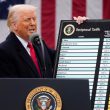BRICS currency 2026 plans are getting a lot of skepticism right now, and economist Barry Eichengreen actually dismisses the whole BRICS currency charade as pretty unrealistic. The BRICS currency release date is still up in the air, with BRICS currency latest news showing some pretty big obstacles ahead. Even though there’s talk about a BRICS currency backed by gold, experts are questioning whether these efforts can really challenge how dominant the dollar is.
Also Read: BRICS Gold Reserves: How Much They Have & De-Dollarization Impact
BRICS Currency 2026 Plans Highlight Dollar Dominance And Global Risks


Russian Report Outlines Technical Framework
The Russian finance ministry put out this report at the Kazan summit. He recommended a common platform for cross-border payments using BRICS central-bank digital currencies. This BRICS currency 2026 thing is trying to get around the US banking system along with the SWIFT network.
Russian Foreign Minister Sergey Lavrov had this to say:
“No one in the BRICS community is raising the issue of replacing the dollar. The alternative is to switch to settlements in national currencies.”
The Project mBridge platform got developed with help from the Bank for International Settlements, and it might make the BRICS currency charade work through blockchain tech. But there are still governance problems that haven’t been solved, especially when it comes to dispute settlement and regulatory stuff.
Gold-Backed Strategy Faces Problems
BRICS central banks have been buying more gold from their own domestic miners, and the Shanghai Futures Exchange actually started doing T+0 settlement for physical gold trading. This BRICS currency backed by gold strategy is trying to reduce how much they depend on Western markets.
Barry Eichengreen pointed out some basic problems with gold-backed systems – he noted that payments would get expensive if they actually involved shipping gold around. The economist said that having convertibility at fixed prices would just bring back the same problems as the old gold standard.
World Gold Council data shows that 19 out of 36 central banks are now buying gold directly from domestic sources, which supports the BRICS currency latest news around precious metal backing strategies.
Expert Analysis Questions Viability
Eichengreen’s analysis shows that previous attempts to replace the dollar have failed consistently. The euro took 34 years to develop and it still hasn’t managed to challenge dollar supremacy, which makes the BRICS currency charade look pretty unrealistic.
The renminbi only accounts for less than 6% of global trade settlements even after Chinese promotion efforts. Capital controls and governance issues limit how useful it is, and these are similar challenges that any BRICS currency 2026 implementation would face.
Also Read: How BRICS Is Replacing Western Finance With Its Own Mechanism
In their Kazan Declaration, BRICS participants just “recognized” the role of improving international monetary systems, but they didn’t actually commit to concrete BRICS currency release date timelines.





